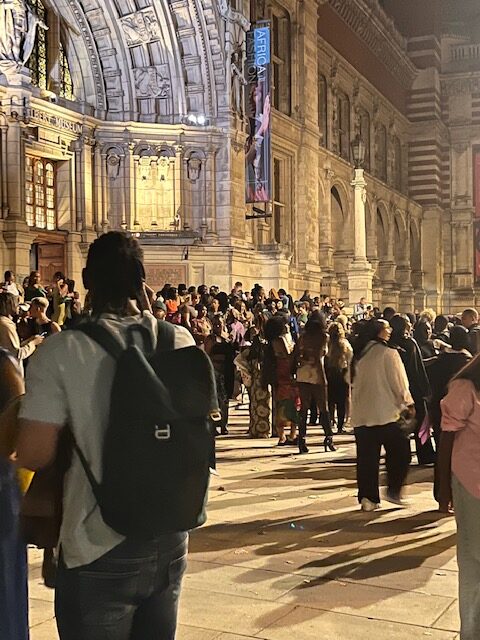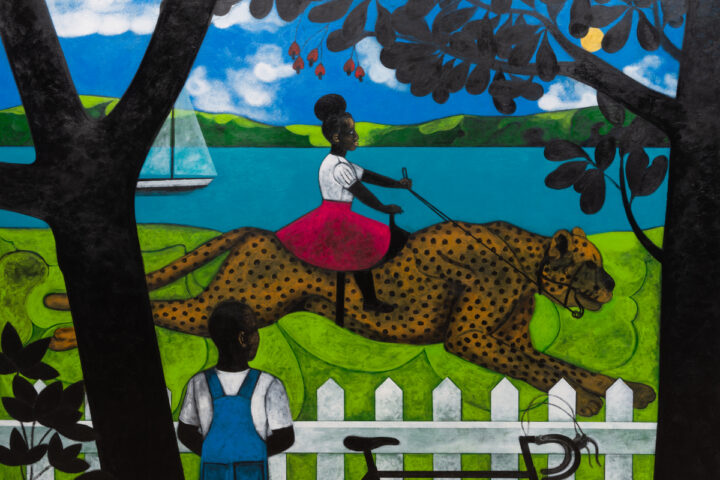Bold, Beautiful, African: A Fashion Revolution at the V&A
The Victoria and Albert Museum’s landmark exhibition puts African fashion in the spotlight—honouring heritage, identity, and bold contemporary creativity.
In recent years, despite the twin challenges of COVID-19 and global economic instability, creativity across the African continent has flourished. From film and contemporary music to the visual arts—and even opera—African talent is increasingly taking centre stage. Congolese bass Blaise Malaba, for example, is currently captivating audiences at London’s Royal Opera House.
Yet amid this cultural renaissance, one dynamic force has remained underrepresented: Africa’s booming fashion industry. While full of innovation and international relevance, many of the continent’s most visionary designers have gone unrecognised in the West. That may be about to change.
London’s Victoria and Albert Museum is hosting African Fashion—the largest exhibition of its kind ever seen in the UK. This vibrant showcase celebrates the work of some of the most exciting designers working today and offers a long-overdue platform for African fashion on a global scale.
A Museum Confronts Its Past
Founded 170 years ago during Britain’s colonial era, the V&A’s vast collection includes many objects acquired during that imperial period. Hosting an exhibition of African fashion in such a setting is no small gesture. It invites reflection on the UK’s colonial history and offers a chance to reshape its present-day relationship with Africa into one of mutual respect and cultural exchange.
The exhibition’s curators embraced this moment. They collaborated with a wide range of voices—from designers and diaspora communities to cultural historians and young people. Participating designers were given control over not only the selection of pieces but also how they were presented—shifting the traditional museum narrative towards one of partnership and authenticity.

A Pan-African Celebration
Spanning the entire continent, the exhibition features 250 objects, with pieces from Morocco to Ghana to South Africa. Roughly half come from the museum’s existing collection, while the other half are new acquisitions, reflecting the evolving nature of African fashion today.
The show also explores how clothing and identity in Africa are deeply intertwined. Archival photographs play a crucial role, including an iconic image of Ghana’s first prime minister, Kwame Nkrumah, draped in kente cloth as he declared independence. That moment transformed kente into a powerful symbol of pride for Africans across the globe.

Icons and Innovators
The exhibition pays tribute to trailblazers such as Alphadi, known as the “Magician of the Desert,” who rose to fame in the 1980s with his dramatic, desert-inspired designs. Also featured is Ghanaian designer Kofi Ansah, celebrated for blending African and European aesthetics. One standout piece: a shimmering blue robe that subtly echoes the lines of a traditional Japanese kimono.
In the upstairs gallery, the focus turns to a new generation of designers using fashion as a form of social commentary. These labels champion feminist values and LGBTQ+ representation, demonstrating how fashion in Africa is not only artful, but activist.
A Night to Remember
As part of the exhibition, the V&A hosted one of its signature Late events—an evening of immersive programming tied to the museum’s headline shows. This month’s edition was a dazzling celebration of African creativity, featuring a live fashion show, pop-up displays of emerging designers, and an open mic session.
Two events stood out in particular: Dressing Your Spirit, an interactive sketching session centred around a model dressed in traditional attire, and a lively panel discussion on how East African designers can draw lessons from their West African peers in marketing to global audiences.
With more than 4,000 visitors in attendance, the event was one of the most successful in the V&A’s history—a testament to growing public interest in African fashion and design.
A Must-See Exhibition
African Fashion is more than just a showcase of stunning garments. It’s a statement about identity, history, and creative power. For anyone with an interest in fashion, culture, or the future of design, this exhibition is essential viewing.
African Fashion runs at the Victoria and Albert Museum until April 2023.






- FASHION: Find what makes you happy and do it well!
- Everything you want to know about invertebrates – Interview with Vladimir Blagoderov, Curator
- Africa Finds its Cinematic Voice
- SXSW the World’s most unique festival















